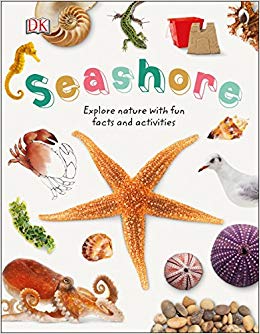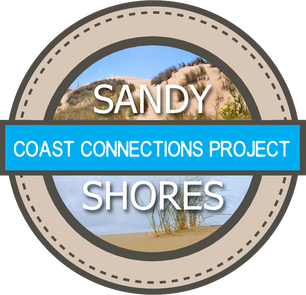Navigate:EDUCATE > COAST CONNECTIONS > SANDY SHORES Entry Events Driving Questions:
Authentic Projects for DQ1: Authentic Projects of DQ2: Authentic Projects of DQ3: |
Entry Event: Read a Book:
A book can provide visuals and engaging narration that help bring an issue to life. The book Seashore from the DK Nature Explorers series introduces many of the animals, plants, and features of different types of beaches. It also includes ideas for accompanying activities, which could provide inspiration as you plan your Sandy Shores unit!
Step 1: Acquiring the book If your school has the funds available, purchase 5-6 copies of the book. If this isn't an option, request a copy from your school or community library. Then, make 5-6 copies of select pages (see "Helpful Tips" below). Step 2: Reading groups Divide your students up into small groups of 4-5. Ensure that each group has a diversity of reading skill levels. Then, ask each group to choose one page of the book to read together. Students should take turns reading one paragraph aloud at a time. Tell them that they will be sharing what they learn with the whole class, so they should read carefully! Step 3: Share out Each group should stand and share what they learned from their page, using pictures from the book as a visual aid. Allow time for the rest of the class to ask questions of each group. (See "Helpful Tips" below for some question ideas to encourage discussion.) Helpful Tips: When making copies or directing students to choose pages, focus on the following pages most relevant to this Sandy Shores unit:
Related Features: Bird Species Ready to Move On?CHOOSE YOUR DRIVING QUESTION BELOW:
DQ1: Why are our sandy beaches special? (Learner Level: Beginner) DQ2: How can we take care of sandy beaches? (Learner Level: Developing) DQ3: Why do we need to restore Oregon's dunes? (Learner Level: Advanced) |
|
About Oceanscape
The Oregon Coast Aquarium's Oceanscape Network is an educational program for youth designed to inspire curiosity in science, nature, conservation and outdoor exploration while providing valuable classroom resources for educators. MORE.
Quick Links
|
Finding the Aquarium
Oceanscape Network © 2023 by the Oregon Coast Aquarium. All rights reserved.
|



